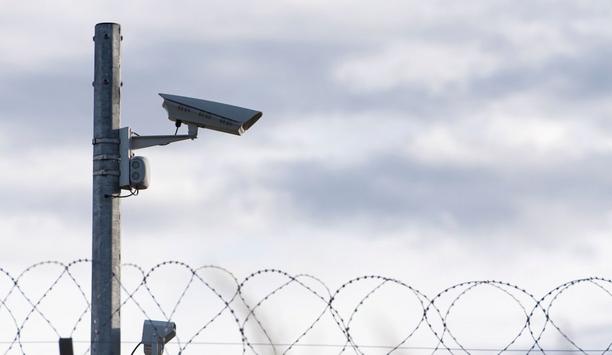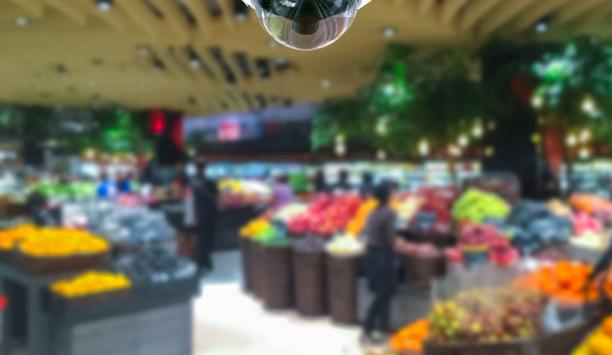 |
| Newer concepts and modern security solutions help achieve operational efficiencies in the retail sector |
The fact is, working in loss prevention today is not easy, and many retailers are still relying on analogue technology and simple DVR storage devices to record images from their sales floor, warehouse docks, and checkout areas. With this outdated technology, they are compromising video quality, limited in growth and storage space, unable to remotely access video due to bandwidth limitations, and just don’t have the time or resources to manually sift through video to identify points of vulnerability.
This is why retailers are turning to newer concepts and modern security solutions that will help them not only contend with shrinkage, but also achieve operational efficiencies and gather business intelligence from store activity.
There is no question, however, that retailers face unique challenges every day. The loss of merchandise, cash or other company assets is by far the biggest challenge for loss prevention (LP) teams. Shrinkage occurs anywhere in the retail supply chain, between receiving the merchandise from suppliers and the customer’s purchase at the point of sale (POS). LP teams need to be one step ahead of Organised Retail Theft (ORT) gangs, and keep close tabs on POS transactions to spot dishonest employees, faulty price labelling, or poor business processes before it costs them millions in losses. Liability issues, like slip and falls on store property, also require proper documentation to disprove false claims. Multiply all these challenges across sometimes hundreds, if not thousands, of international locations for a true snapshot of their obstacles.
A shrink-minimising platform
One solution is a unified security platform that seamlessly merges video surveillance, access control, and license plate recognition with other retail systems into one efficient and user-friendly solution. The platform would consolidate and standardise the common aspects of security operations such as real-time event and video monitoring, advanced reporting, alarm management and configuration, and make all tasks easily accessible via an intuitive client application. Ultimately, the platform would assist retailers in minimising losses while providing a new source of marketing information.
Future-proof open architecture
A unified security platform seamlessly merges video surveillance, access control, license plate recognition and other retail systems into one efficient, user-friendly solution |
A system with open architecture often features greater longevity This means that retailers converting from analogue to IP can easily lower their total cost of ownership by keeping existing hardware investments, and slowly migrate to new technology at their own pace. Retailers can also consider adding a few HDTV network cameras to achieve a minimum of three times the resolution of some analogue cameras for more sensitive areas like cash registers or receiving doors. Improved video quality helps operators better track and identify instances of shrinkage or fraud.
Unifying POS data with video
The concept of open architecture also extends to unification. Data and information from external systems such as POS, EAS, access control, video analytics or intrusion systems, can be unified into a single platform that offers retailers a powerful tool for investigations. For example, an investigator could ask the system to display the video of all stores when a receiving door was opened say after 4:00 pm, or to show all refunds from that day’s transactions over a certain monetary value. The associated video is then instantly accessible for a quick review.
Central management of multiple stores
A feature that allows each store’s security team to independently manage their facility’s security while also tying all systems back to headquarters for centralised event and video monitoring would also be beneficial. Without size or geographic limitations, it would be possible to monitor hundreds or thousands of retail locations spread across several regions and countries. This could lead to significant savings by not requiring security personnel at each store during off-peak hours, for example.
Another benefit would be the ability to generate centralised video, access control and even POS reports across several stores, rather than having to run individual reports for each. Consolidation of information simplifies the investigation process in addition to allowing retailers to find patterns and generate statistics more effectively.
Network flexibility and scalability
 |
| With a cloud-based system, shop owners can access live or recorded video from any network location |
Bandwidth-saving features like multi-streaming can help scale back network load. By configuring multiple streams at different quality levels from a single surveillance camera, it is possible to preserve high quality video within the store and provide a reduced quality stream for remote access. It then becomes possible to transmit video over the WAN without affecting POS transaction data usually transmitted over the same link.
For small footprint stores, edge recording-capable cameras could be a smart alternative to the traditional server based approach as it removes the need to deploy and maintain a server in each and every store location. This cost-effective solution also allows for automatically transferring the video to a central location where it can be stored for longer periods. This can be scheduled during off-peak hours in order when WAN network bandwidth utilisation is low.
Remote and mobile access
Another inherent benefit of a network security platform is the ability to gain access to live or recorded surveillance video from any network location, including via mobile devices. This is not only beneficial to the shop owner who needs to check-in on his business from home, or the security guard who is on the floor and needs to respond to an alarm; remote video access can also aid the business in being more responsive to the need for change. For example, enabling merchandising departments to remotely audit store compliance with a promotion or end cap display and instantly correct display guidelines that have not been adhered to.
A simple, cost-effective choice for retail chains
Another solution for retail chains with multiple stores with 10 cameras each is a cloud-based video application.. A cloud-based application is an easy and affordable way to switch from analogue or DVR-based technology to IP, offering retailers the ability to secure their sites without the burden and costs of housing, maintaining and cooling servers, or even the need for IT resources or expertise.
With a cloud-based video surveillance system, retailers can choose from the latest megapixel cameras to capture clearly detailed, high resolution video to view incidents and identify suspects. Then, for a small monthly fee, retailers get access to an easy-to-use online management platform that lets them view live and recorded video from their laptop, tablet or smartphone. They can also handle alarms, bookmark clips, save video to permanent storage, share or even export video to their computer.
Enhancing a loss prevention strategy means adopting the right technology for the job. A unified security platform and a cloud-based video management solution are two cutting-edge options available to retailers today. Not only do their powerful features and capabilities help loss prevention teams become more effective at pinpointing theft, and closing cases, but they also help extend operational efficiencies to other departments. When combined, they can be the right investment in security technology to positively impact any retailer’s bottom line.




















